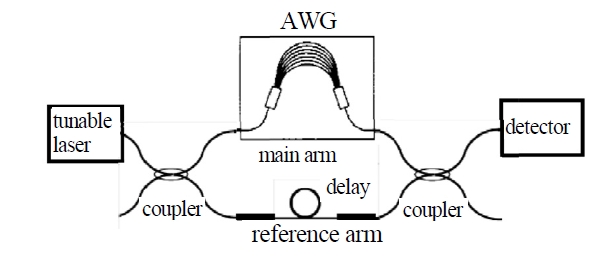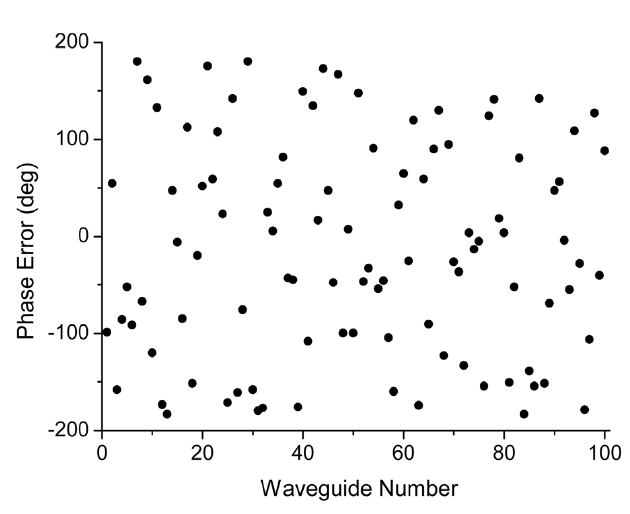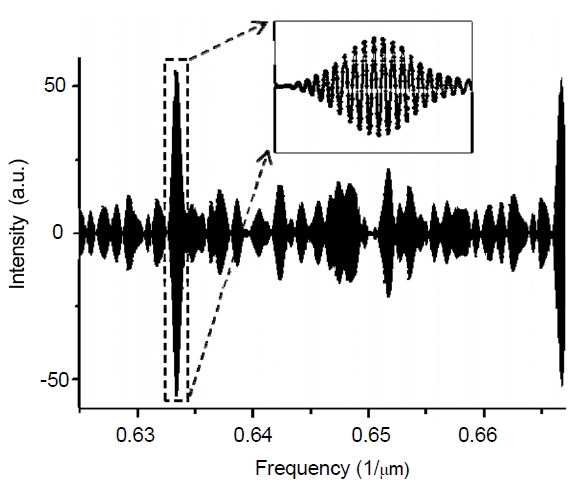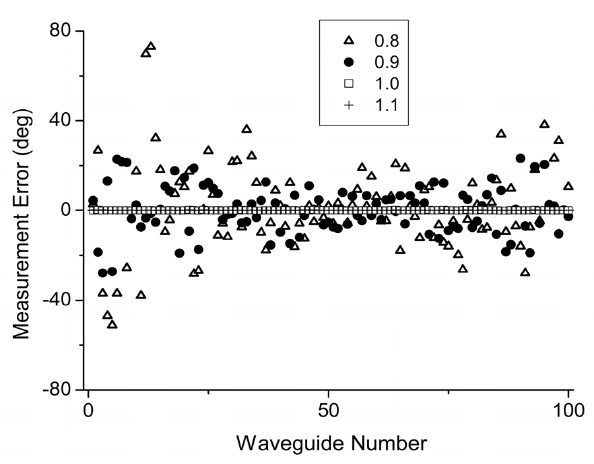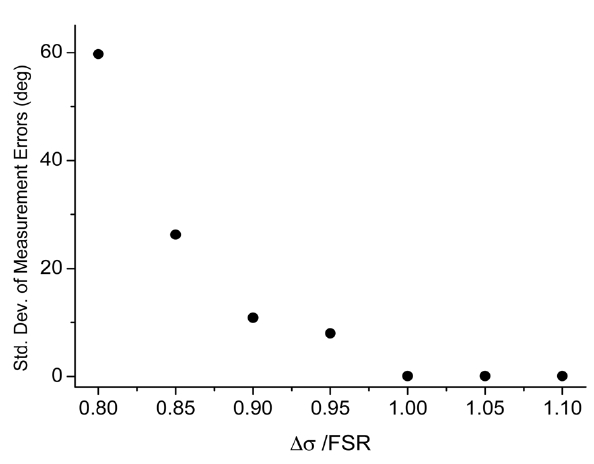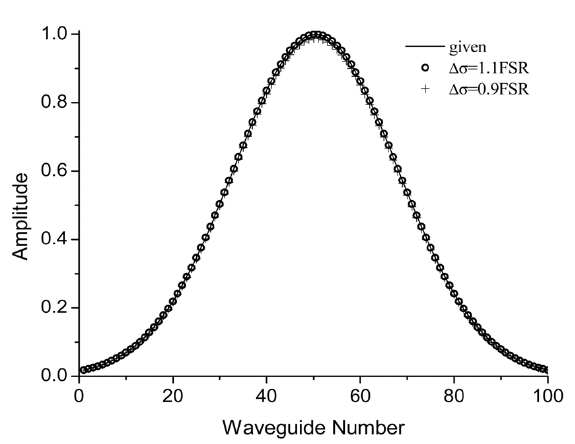



Low-crosstalk arrayed waveguide gratings (AWGs) are key components in dense wavelength-division-multiplexing (DWDM) photonic networks [1]. The crosstalk depends on the phase errors of the waveguide array and can be reduced by various compensation techniques requiring precise phase measurements [2-4].
The phases of an AWG can be measured by an optical low coherence method [5-7] or by a frequency domain method [8-10]. The latter method is easier to implement because it does not require fine control over the path length in an interferometer. In this method, the phases are obtained from the Fourier transform of the interference intensities, which appear as a series of peaks that have the phase information of each waveguide. However, it is impossible to completely eliminate overlaps of neighboring peaks. Hence, another process is required to extract the phase values. The measurement accuracy may also be lowered by the error in calculating the Fourier transform.
In this paper, we propose a method to obtain phase values directly from the interference intensities, without the need for Fourier transformation. We verify this approach by a simulation in which an artificial AWG is analyzed. In section 2, we describe the method of phase measurement. The results of the simulation are reported in section 3.
Figure 1 shows a schematic diagram of the experimental setup for the frequency domain method. The AWG is included in an arm of a fiber interferometer, and the interference intensity is measured as a function of the laser frequency.
When the AWG is composed of N-waveguides, the interferogram, which is defined as the normalized AC component of the interference intensity, can be expressed as follows [11]:
Here,
reciprocal of the laser wavelength.
We derive the values of the amplitudes and lengths by fitting the theoretical interferogram to the experimental data through the Monte-Carlo method. The process is as follows. First, we assign initial values to the set of parameters {
We simulated the phase measurement process to verify our method. First, we created an artificial AWG with arbitrary phases and amplitudes. Then, we calculated the virtual interferogram by using Eq. (1). Considering this as an experimental interferogram, we derived the phases and compared them with the initially given values.
The number of waveguides in the array (
Figure 3 shows an example of a virtual interferogram for an AWG whose step increment (
The symbols in the inset represent the theoretical data fitted by the Monte-Carlo method. Here, 10000 data points for σ are used to calculate the cost function. The computer running time for the Monte-Carlo-optimization is approximately 5 minute. We can see in the figure that the intensity oscillates with
Previous studies have shown that the possibility of phase measurement depends on the laser tuning range (
greater than 1.0. However, as the ratio becomes less than 1.0, the errors increase rapidly. Figure 5 shows the standard deviation of the phase errors. The deviation is 0.07° when the ratio is 1.0. However, it increases to 8° when the ratio is 0.95. Hence, we can conclude that the phases can be measured correctly if
The relative amplitudes were also measured for various ratios
When we used a trial-and-error method in Fourier space, we could measure the phases precisely only if
50° [11]. And even in that case, the measurement errors were very large for waveguides with amplitudes lower than 20 % of the peak value. The standard deviation of the phase measurement errors was greater than 1°, which is more than ten times of that in intensity space. Above all things, computational time of the Monte-Carlo process is much longer in Fourier space than in intensity space. Hence, it would be more advantageous to measure them in the intensity space. The poor results in Fourier space are believed to be related to the errors in calculating the Fourier transform.
We show that it is possible to measure the phases of an AWG directly from the interferogram by a trial-and-error method. The phase measurement error is as low as 0.1° if the laser tuning range is greater than FSR. Moreover, this method shows high performance even for waveguides at the edges of the array, which tend to have very small amplitudes. All the characteristics are superior to the analysis using the Fourier transform.
